The Bugatti Royale Park Ward Limousine

Here it is, the ultimate Bugatti Royale, perhaps the ultimate car? When I first laid eyes on chassis 41131, I was taken aback. My emotions towards this completely inanimate object heightened. The massive Park Ward bodied Limousine has an ominous presence with its seven-passenger bodywork and single tone black paint. It is the only Royale which currently exists painted in a single tone.
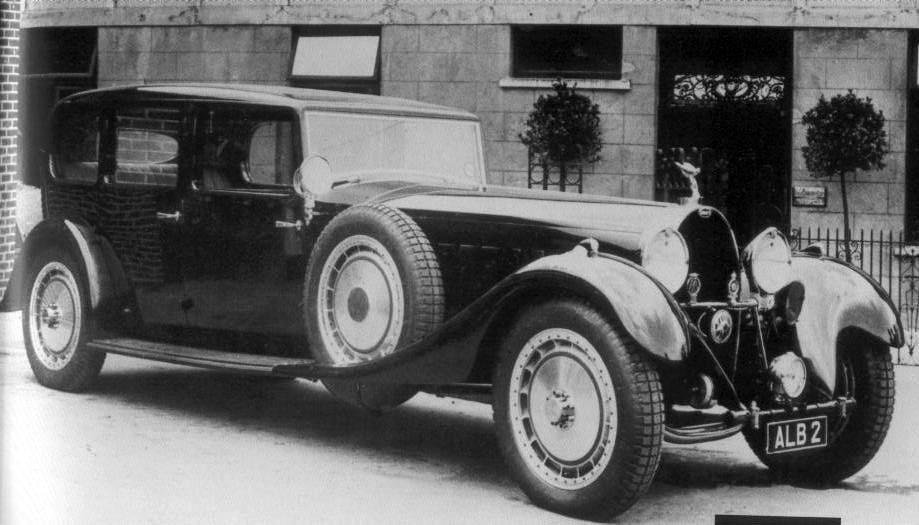
This Royale chassis is considered to be the last Type 41, as it was sent to Park Ward & Co. of London in 1933. Its first owner, Captain C.W. Foster commissioned a closed limousine body. Foster, whose mother was an heiress to an American department store, was living in Great Britain. Here is 41131 upon completion, complete with a Royale Automobile Club grille badge and British registration.
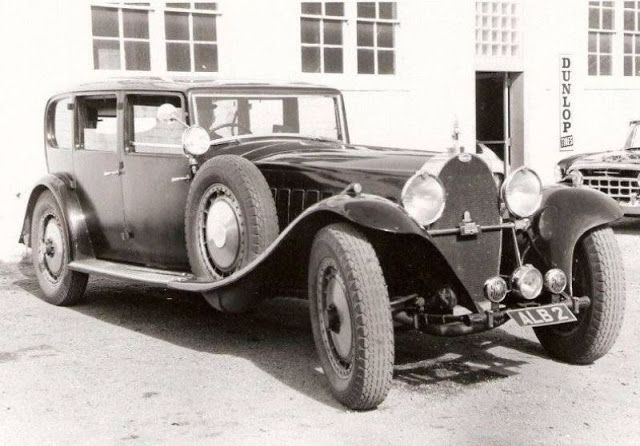
At some point during Captain Fosters ownership, new tires needed to be fitted to the massive vehicle, and the only ones available were described as ‘large artillery type’. As a result, the aprons were cut off the front fenders, as seen in the above photo. It is unknown to myself and impossible to see from the photographs whether the rear fenders had to be trimmed as well. I assume the badge in the middle is that of the Bugatti Owners Club, and would love to know what the little plaque below it reads.

After World War Two, Captain Foster sold the Royale to Jack Lemon Burton, a founder of the Bugatti owners club. Jack is pictured above, presumably at Prescott Hill Climb! Ten years later an American collector named John Shakespeare purchased the Royale and imported the Grandiose Limousine into the United States. Evidently Shakespeare picked the car up at the port in New York, and drove it straight home to Centralia, Illinois.

Evidently Shakespeare continued to use the Royale extensively over the next 8 years, as he continued to collect Bugattis, and race Ferraris. He was able to pursue such extravagant hobbies as a result of his families business, Shakespeare Fishing Reels. Here is Shakespeare, with his newly purchased Royale, still displaying the circular UK road tax paper in the front windshield.

What would drive someone to sell such an incredible car? He let it go after a multi-year pursuit by Fritz Schlumpf, a Swiss-born French Textile Magnate, offering to buy all thirty of Shakespeares Bugattis, in order to obtain 41131.

Schlumpf was assembling a private museum, on the grounds of his textile factory in Mulhouse, France. Moving thirty Bugattis from Illinois to France, in various states of assembly, many of them not running, would certainly be a logistical nightmare today, let alone in March, 1964. Luckily there were train tracks just a few hundred yards from the buildings where Shakespeare stored the cache Bugattis, so they were all shipped on open rail cars to New Orleans, the only protection applied was plastic on every steering wheel. From New Orleans, all the cars were loaded onto a ship which took them to Le Havre, France, and from their transported to Mulhouse.

Here is 41131 in its original resting place in the main room of Schlumpfs museum. This is the first time the car is seen without the paint line on the cast aluminum wheels, perhaps burned off when each was polished. Evidently the Limousine was in great shape when it arrived, which makes one hopeful that many of its original finishes were left alone.

Today the Royale retains much of its original equipment, but is missing its UK license plates, hood badges, and one more vital component, which will be further highlighted below.
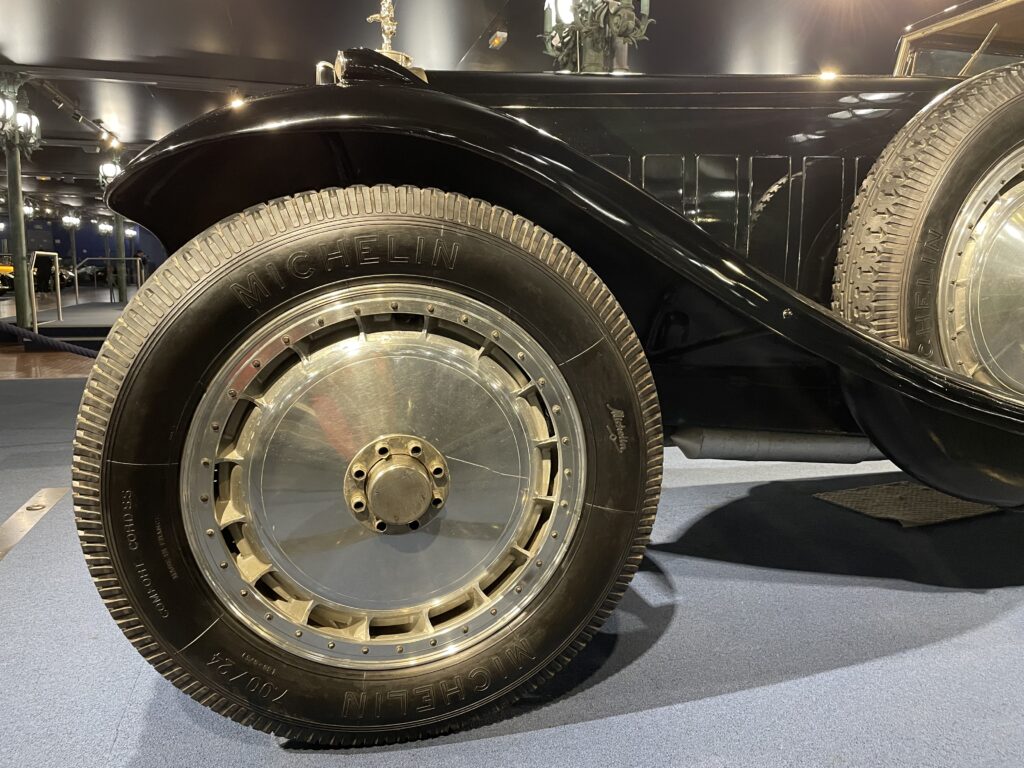
The Park Ward Royale has six massive cast aluminum wheels, two of them are spares mounted on the front fenders, a feature exclusive to chassis 41131.
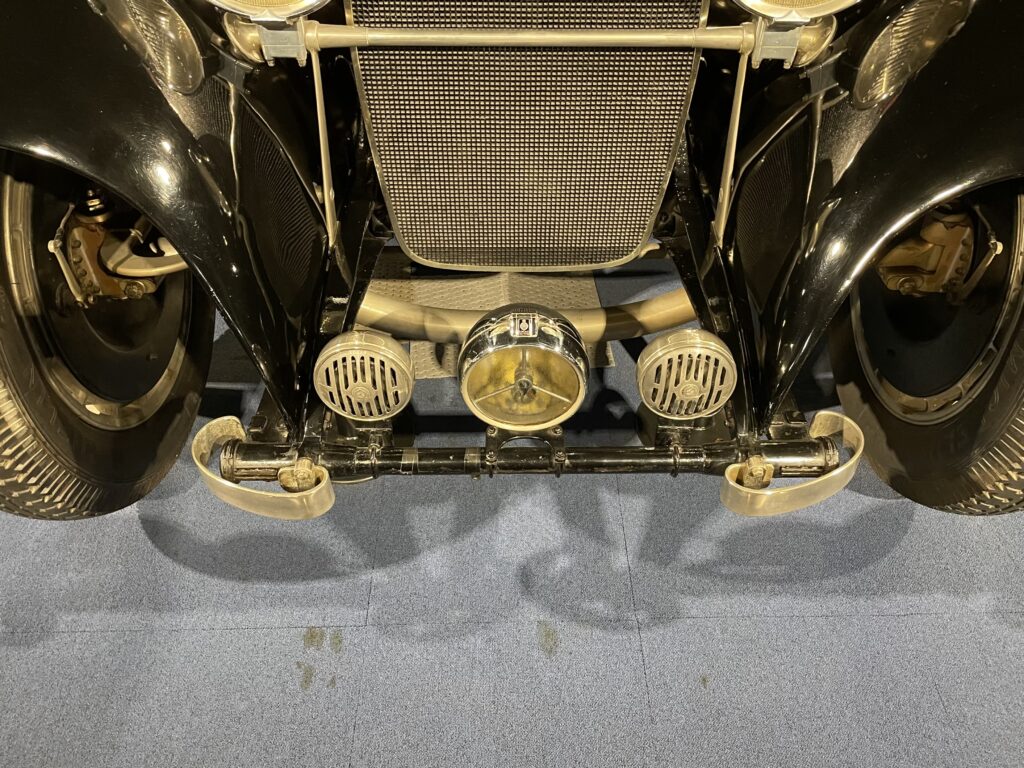
I love the presence of aged finishes everywhere you look. Unlike 41100, this chassis does not have a marking of a Chausson Radiator, denoted by a small cast eagle badge riveted to the bottom edge of the grille.
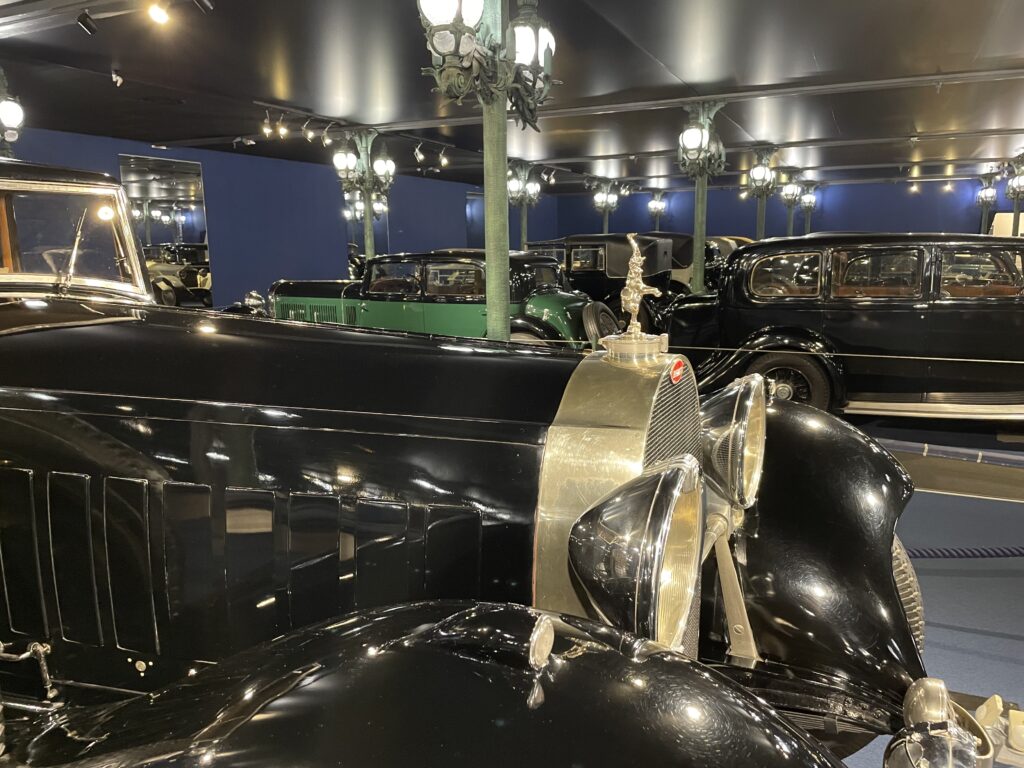
The fatigued finish on the grille shell is just right.

Something is missing on the drivers side A-pillar, shown by the three exposed mounting holes. If you look at the historic photos, when the Royale was first delivered, there was a manually controlled spotlight mounted outside the driver’s window.
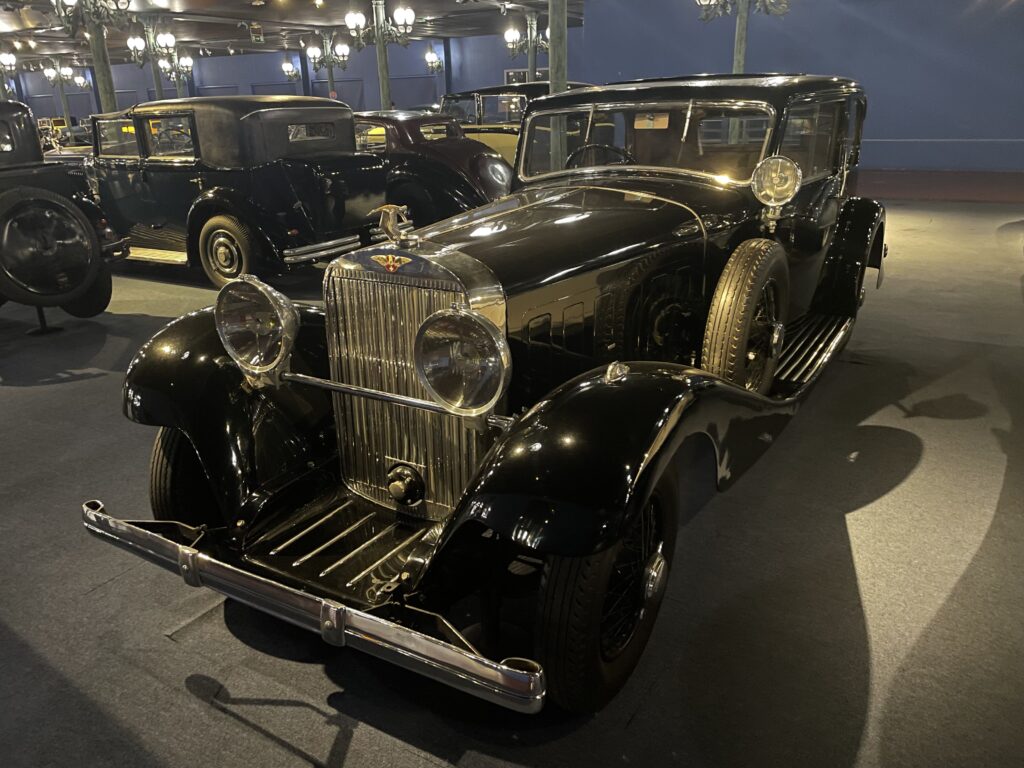
It is thought that this piece was pulled when Schlumpf’s restoration staff prepared the Royale, and it was installed on this Hispano Suiza. I thought the same, until I saw the picture earlier in the article, where Shakespeare is leaning on the hood, with the elephant hood ornament between his hands. You can see that the light is not present in this photo, so perhaps it was placed inside the car for shipping, and was assigned to the Hispano for stylistic reasons or by mistake.
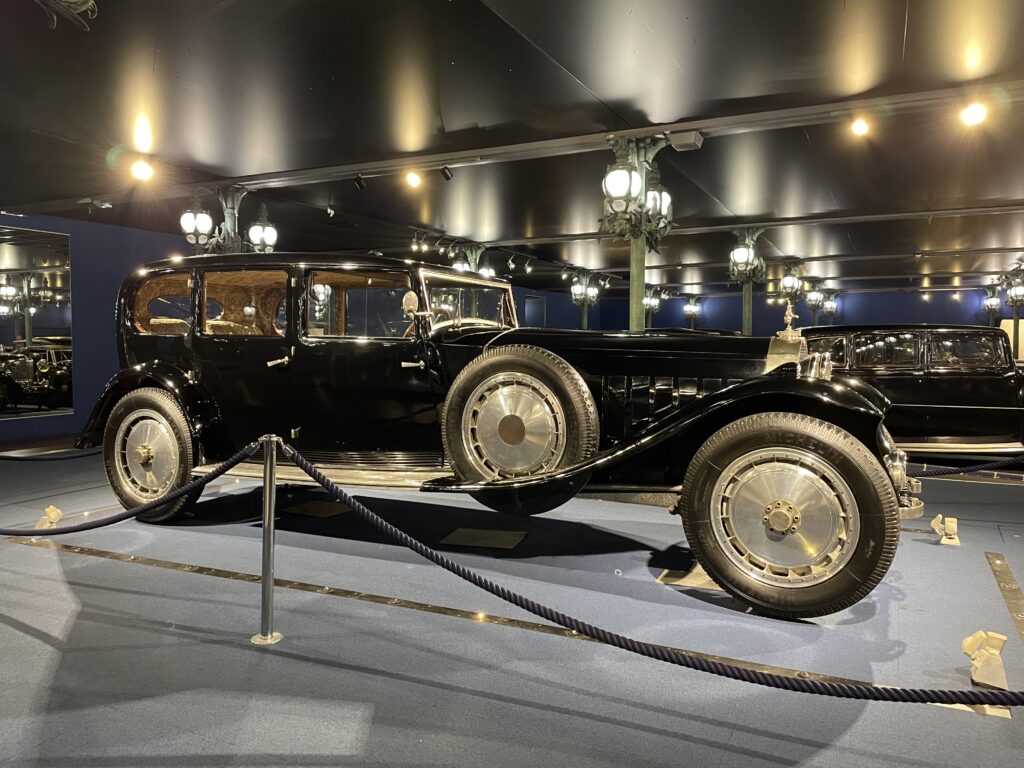
The seven-passenger body looks impossibly long and stands up so straight, giving it a formal look, which I do not feel any other Royale possesses.
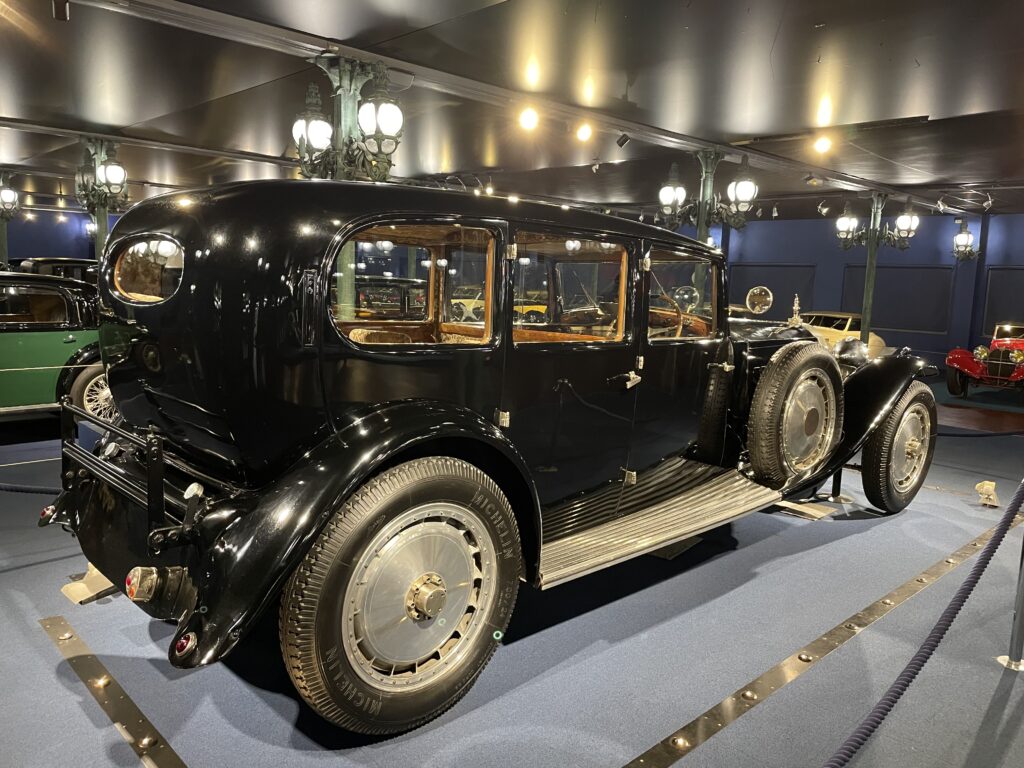
Chassis 41131 currently sits in a room with 41100, as well as the only Type 64 extant. An off-white Type 57 SC can be seen in the background. That chassis also came from Shakespeare.
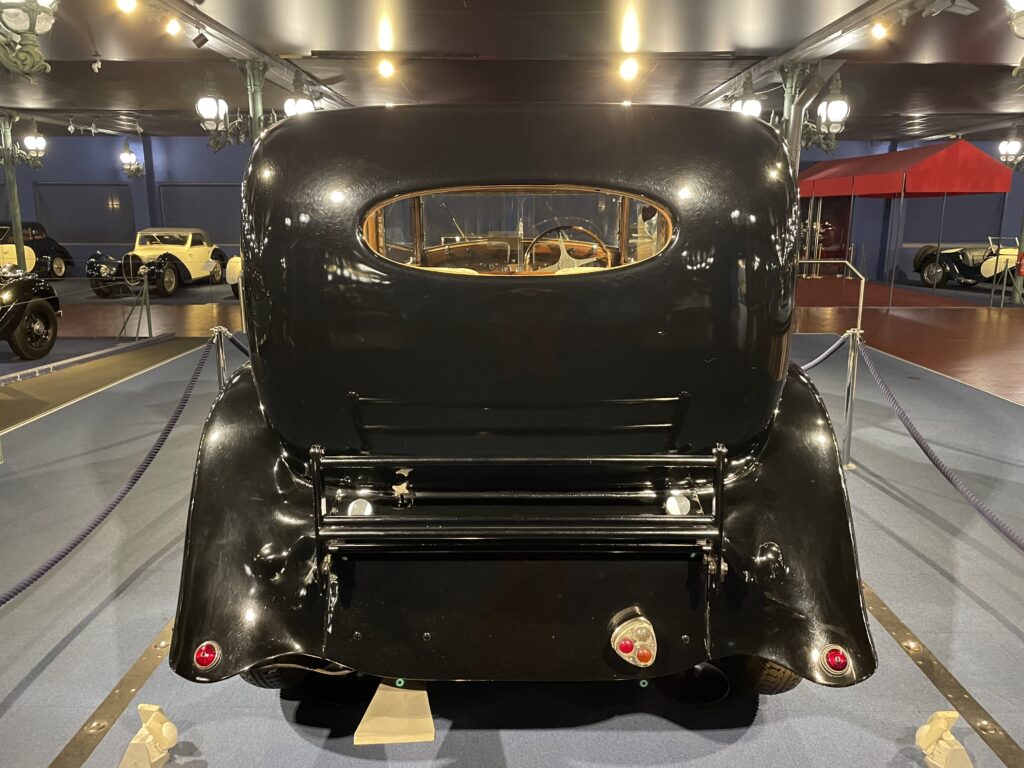
In the rear of the car, the UK plate is missing. Is this sitting on a shelf, or within an archival box somewhere in the museum? It would be interesting to know, and see it fitted once again. I do not know if the two lights mounted on the fenders are original, or which owner, prior to Schlumpf may have added them. They were on the car when Shakespeare sold it.
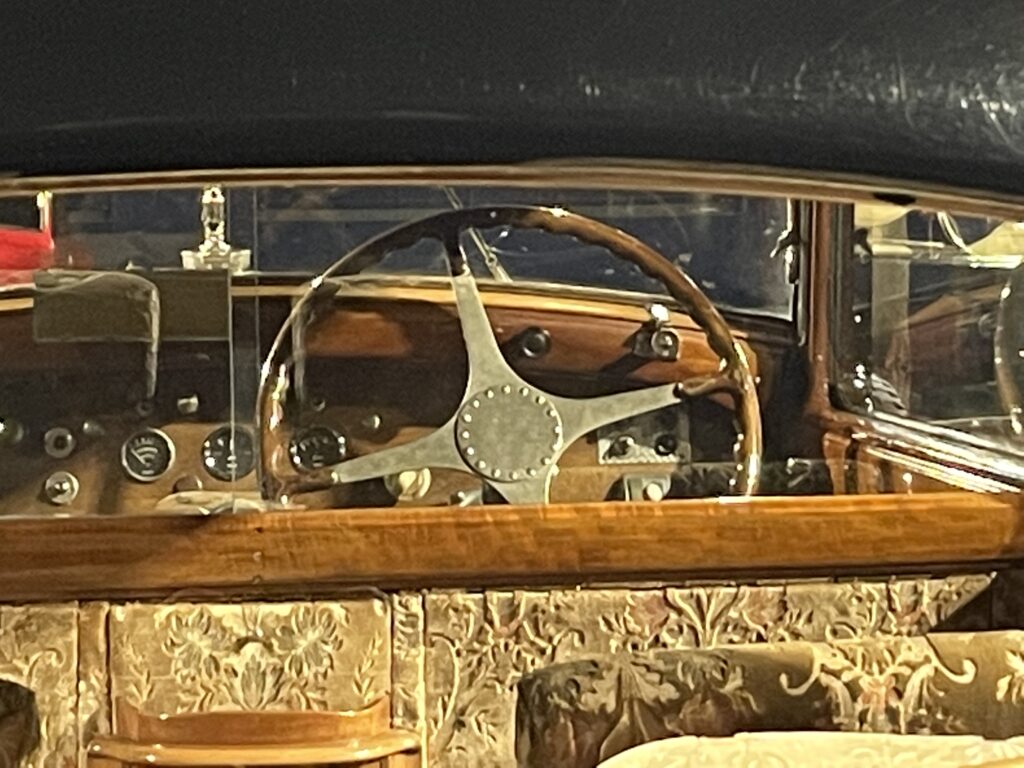
The manual divider window can be seen in this photo, but more interesting to me is the control panel on the right side of the steering column. This is very different to the levers seen on 41100. On a Type 57, these are used to adjust timing and fuel mixture. I wonder what all the switches do, and which owner this was added under. If I had to guess, I would think it was Shakespeare. I have read somewhere that he used the car on many cross country road trips, and the engine turned aluminum, which the panel is made of, is quintessential of hot rods and sports racing cars of the 1950s.

Prior to seeing 41131 in person, I did not realize it was equipped with semaphore turn signals, seen behind the rear windows.
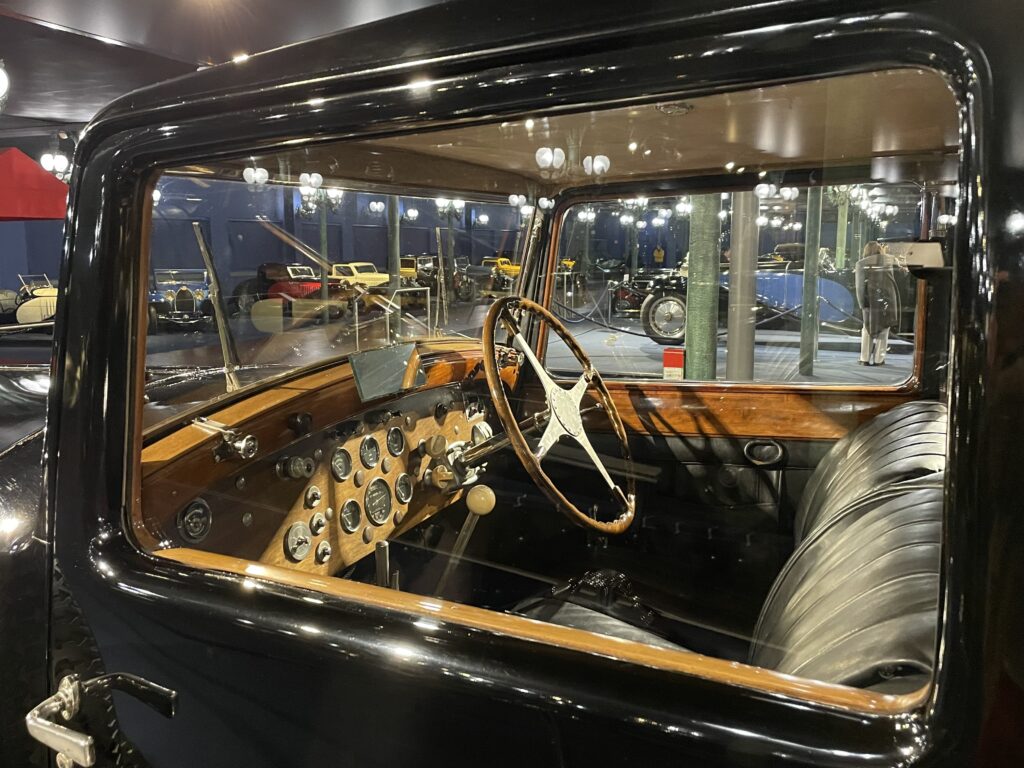
Even though the Limousine is completely closed, the chauffeur’s quarters are still upholstered with leather. Look at all those Type 55’s!
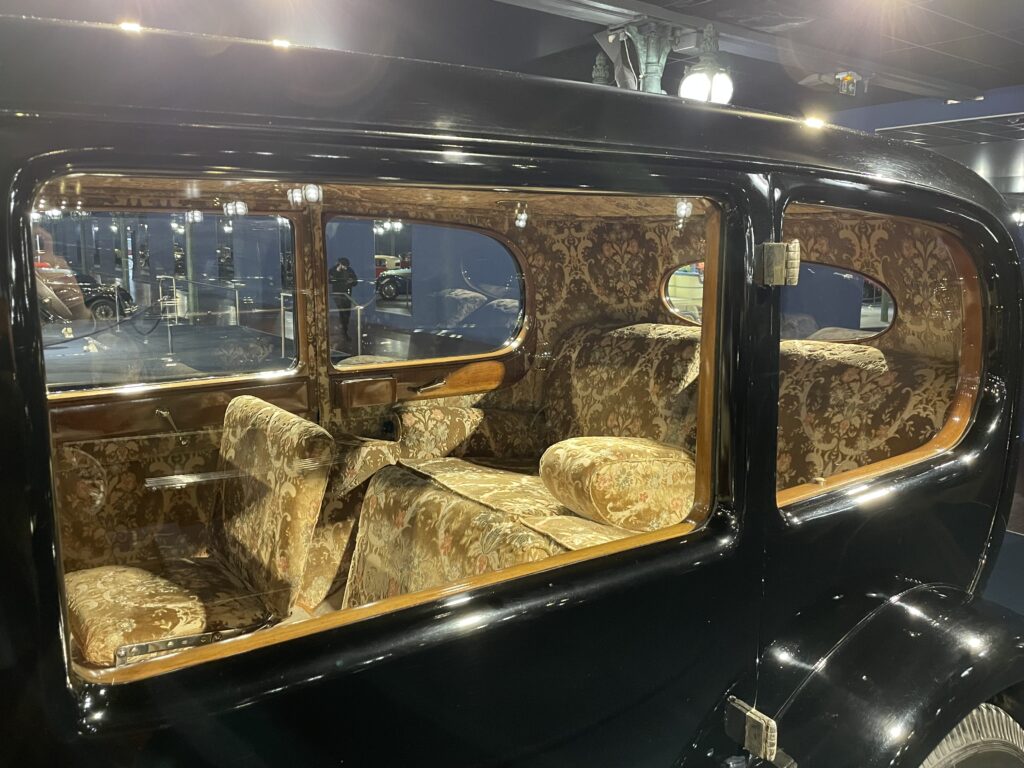
The ornate, fabric-lined rear quarters, which can comfortably hold five.

The tires are probably vintage, and are kept off the ground by four stands, supporting the front and rear ends. This is similar to the practice of The Revs Institute, especially on cars with vintage tires, though they use small black painted blocks, which allow a car to sit closer to the ground without any weight on the tires.
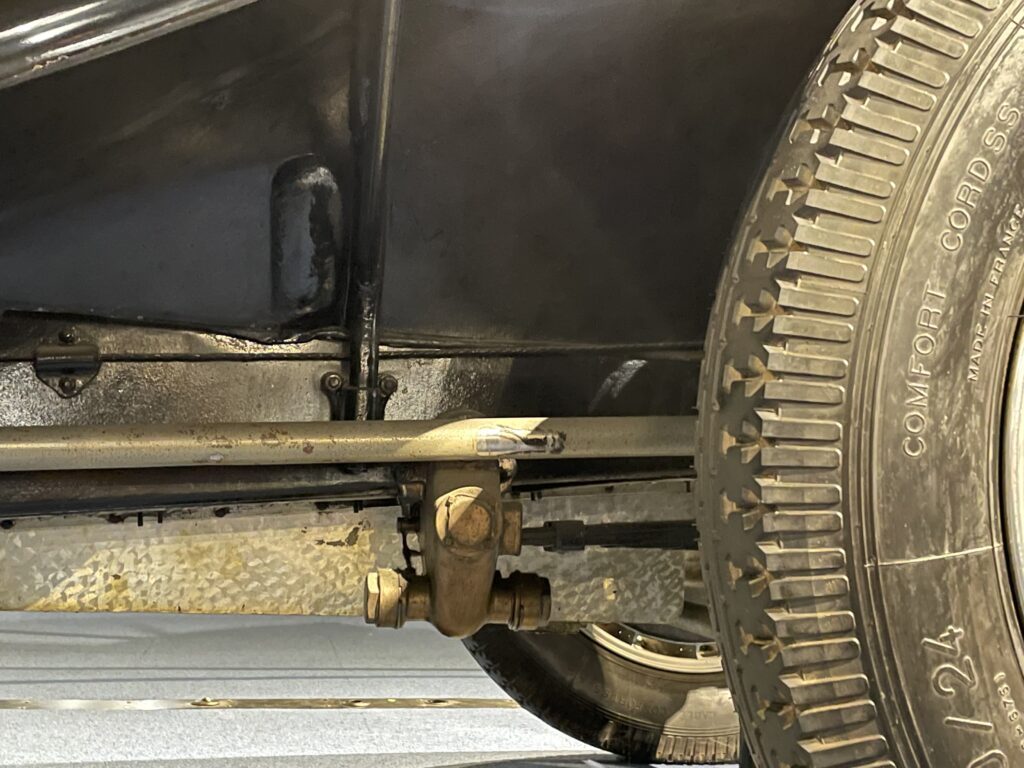
Interesting texture on the aluminum oil pan. I wonder of this rub-through on the paint was caused by the artillery tires.
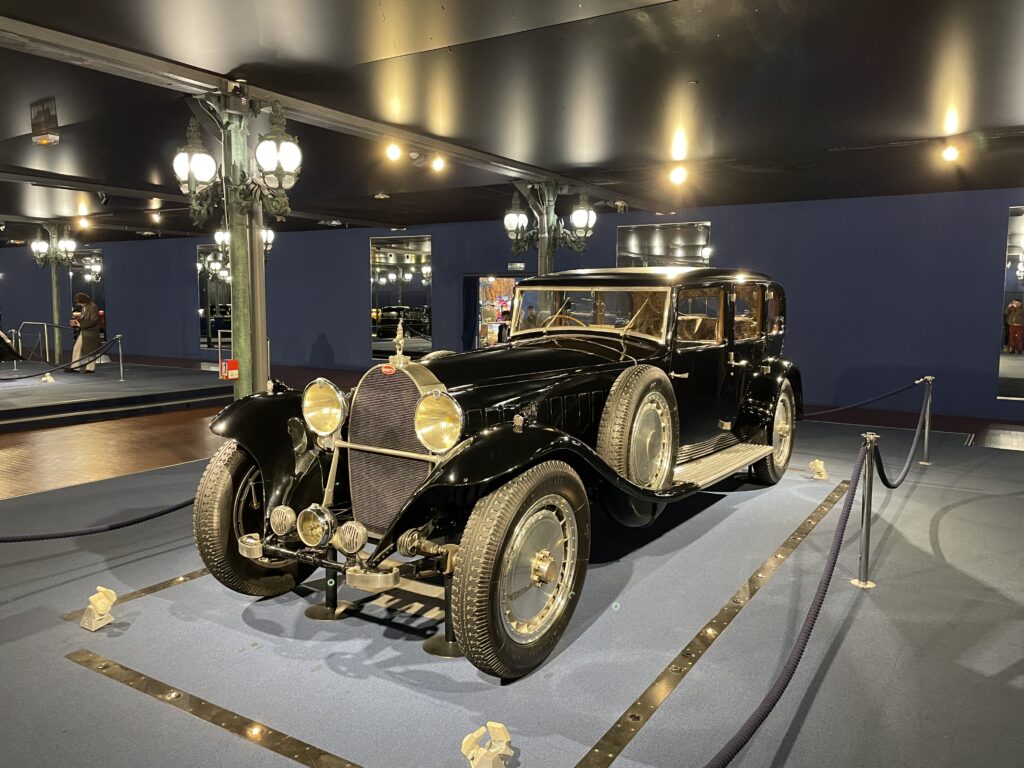
I feel lucky to have been able to visit this, my favorite Royale, In Mulhouse, and I will certainly be back to see it again some day. Below I have linked a video of a talk I gave a few months ago on John Shakespeare. Feel free to email me if you have any other information about this Royale at cameronsluther@gmail.com